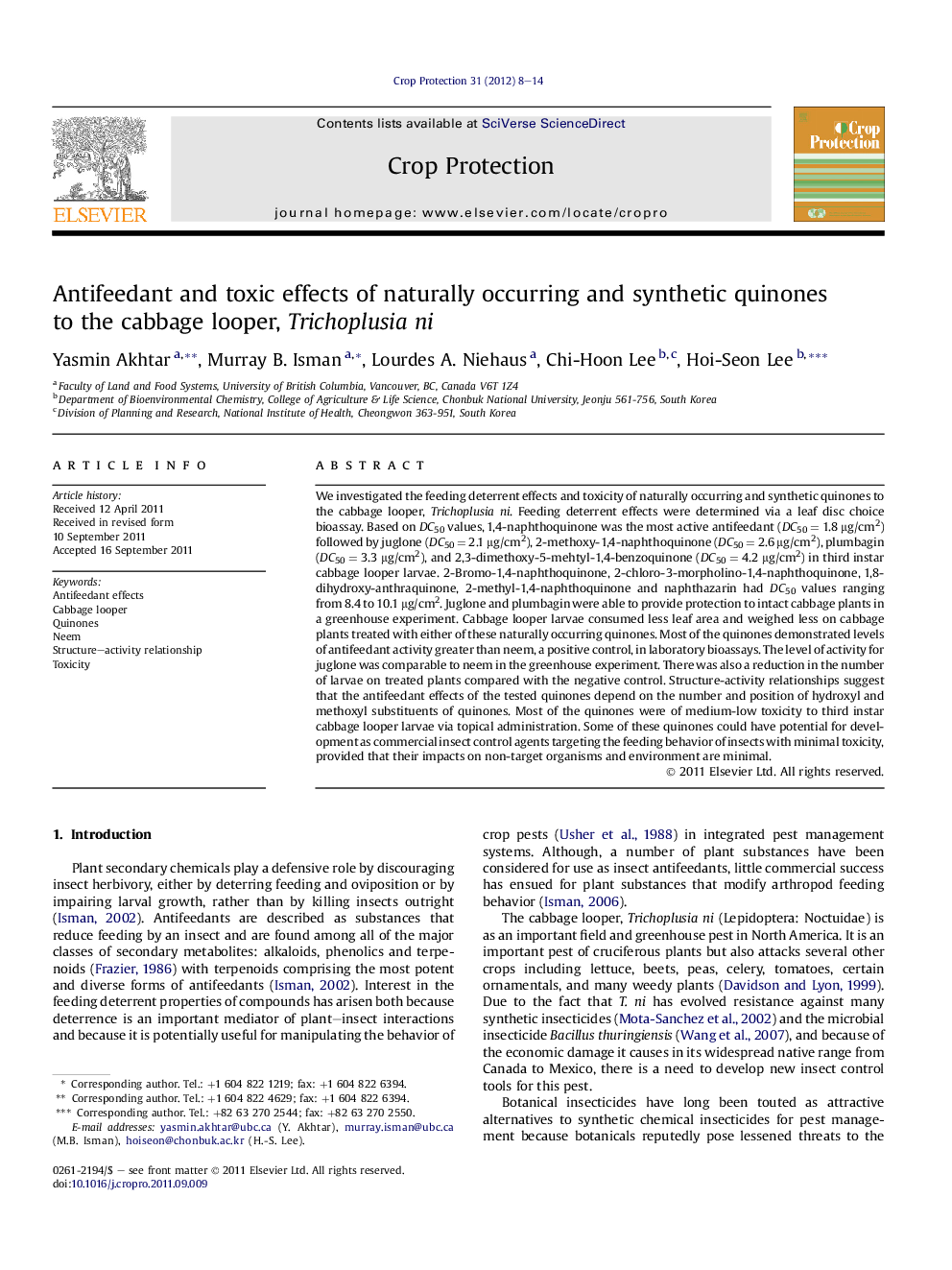| کد مقاله | کد نشریه | سال انتشار | مقاله انگلیسی | نسخه تمام متن |
|---|---|---|---|---|
| 4506486 | 1321317 | 2012 | 7 صفحه PDF | دانلود رایگان |

We investigated the feeding deterrent effects and toxicity of naturally occurring and synthetic quinones to the cabbage looper, Trichoplusia ni. Feeding deterrent effects were determined via a leaf disc choice bioassay. Based on DC50 values, 1,4-naphthoquinone was the most active antifeedant (DC50 = 1.8 μg/cm2) followed by juglone (DC50 = 2.1 μg/cm2), 2-methoxy-1,4-naphthoquinone (DC50 = 2.6 μg/cm2), plumbagin (DC50 = 3.3 μg/cm2), and 2,3-dimethoxy-5-mehtyl-1,4-benzoquinone (DC50 = 4.2 μg/cm2) in third instar cabbage looper larvae. 2-Bromo-1,4-naphthoquinone, 2-chloro-3-morpholino-1,4-naphthoquinone, 1,8-dihydroxy-anthraquinone, 2-methyl-1,4-naphthoquinone and naphthazarin had DC50 values ranging from 8.4 to 10.1 μg/cm2. Juglone and plumbagin were able to provide protection to intact cabbage plants in a greenhouse experiment. Cabbage looper larvae consumed less leaf area and weighed less on cabbage plants treated with either of these naturally occurring quinones. Most of the quinones demonstrated levels of antifeedant activity greater than neem, a positive control, in laboratory bioassays. The level of activity for juglone was comparable to neem in the greenhouse experiment. There was also a reduction in the number of larvae on treated plants compared with the negative control. Structure-activity relationships suggest that the antifeedant effects of the tested quinones depend on the number and position of hydroxyl and methoxyl substituents of quinones. Most of the quinones were of medium-low toxicity to third instar cabbage looper larvae via topical administration. Some of these quinones could have potential for development as commercial insect control agents targeting the feeding behavior of insects with minimal toxicity, provided that their impacts on non-target organisms and environment are minimal.
► Quinones tested against cabbage looper larvae for antifeedant and toxic effects.
► Most of the quinones exhibited strong antifeedant effects with low toxicity.
► Juglone and plumbagin produced a reduction in weight and leaf area consumed.
► Larval recovery on treated plants was less than control plants.
► Quinones have potential for development as commercial insecticides targetting feeding behavior of insects.
Journal: Crop Protection - Volume 31, Issue 1, January 2012, Pages 8–14